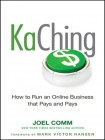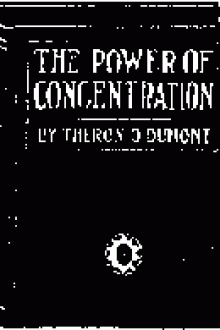KaChing: How to Run an Online Business that Pays and Pays Comm, Joel (books for 8th graders txt) 📖

Book online «KaChing: How to Run an Online Business that Pays and Pays Comm, Joel (books for 8th graders txt) 📖». Author Comm, Joel
As long as you’re adding content, bringing in readers, and tweaking those ads until they’re working at full power, you’ll be hearing KaChing.
An ad-supported content site gives your knowledge away for free. You can make a lot of money with it, but that money doesn’t come from the value of your knowledge. It comes from the value your readers have for your advertisers. If your users like to buy lots of things from your advertisers, you’ll make lots of money. If they prefer to read and click away without touching an ad—and some traffic sources have lots of users like that—then you’ll struggle.
In the meantime, you’ll have given away something valuable of your own for little reward.
You might think that there’s no other way. For years, we’ve been hearing that it’s impossible to get people to pay for content online. Everyone has become so used to being able to read the news for free, browse magazines for free, even watch movies and listen to music for free that trying to persuade Internet users to part with cash is like trying to get teenagers to clean their rooms: It’s something you know you should do, but why waste your time when you know it’s never going to happen?
The reality is very different. In fact, when the incentives are in place and the product is right, not only is it possible to sell information online, but you can actually get closer to the real value of that information.
That’s something that’s very difficult to do offline.
Head to a movie theater, for example, and you can expect to pay about $10 for a ticket. The price might vary slightly, depending on the location, the plushness of the theater, and whether the movie is in its first run, but no theater is going to expect you to cough up $50 or $60 for a ticket. The ticket price a theater can charge is fixed within a fairly narrow band.
Whether you’re seeing an 80-minute comedy that leaves you cold or sitting spellbound through a three-hour sci-fi epic, the price is roughly the same. And that’s true even though you might come out of the epic aware that you would have been willing to pay three or four times more for that experience.
In order to squeeze more money out of the movie-going public and reduce the gap between the price of the ticket and the value of the experience to the moviegoer, movie companies have had to get creative. They’ve had to offer features with clear additional value, such as Technicolor, surround sound, or IMAX. They release DVDs packed with special features and offer merchandise to children to squeeze every penny they can out of the value the movie has to the audience. Just calling it an “epic” or adding half an hour to the film won’t do the trick.
In the publishing world, the limitations for sellers—and the opportunities for buyers—are even clearer. One of the best-selling books in 2009 was Ramit Sethi’s I Will Teach You to Be Rich. Describing itself as a six-week financial boot camp for 20- to 35-year-olds, the book explains how to automate savings and investments, negotiate raises, manage student loans, and generally be smart with money. If it does what it says it does on the cover—and there’s no reason to believe it doesn’t—then over the lifetime of the reader, the knowledge in that book should be worth hundreds of thousands of dollars. Ramit Sethi should be able to sell it for thousands of dollars a copy and still call it a bargain. You can buy it on Amazon for less than 10 bucks, making it perhaps the best investment this side of Wall Street.
The book sells for that price because it’s a paperback, and that’s what paperbacks sell for, especially after Amazon has done its price slashing. Buyers don’t look at the value the book contains for them but at the price of the next book along the shelf. When the competition is that fierce—and price expectations so low—publishers have little choice but to pitch their books in the range that the book-buying public expects.
Move away from long-established and tightly priced industries like movies and publishing, though, and sellers start to enjoy more freedom. In addition to selling a New York Times best-selling book, Ramit Sethi also runs virtual boot camps that build on his book’s content by providing Q&As, webinars with other financial experts, and information about “entrepreneurship and psychology” These are not very different from the content of his book, but because they’re not in book form, Sethi can charge a price closer to their real value. The boot camps cost $199 and sell out quickly.
The Internet is such a new marketplace that information products sold online can enjoy plenty of pricing freedom. Copywriter David Garfinkel, for example, sells his copywriting kit online for $997. Buyers get more than a book, of course. They receive a stack of DVDs showing a complete seminar that students have paid thousands of dollars to attend, together with transcripts and audio versions.
It’s all valuable information, but it’s presented in a way that allows Garfinkel to cram in more details than he could in a 200-to 300-page book—and also allows him to charge a price closer to the amount that buyers can expect in returns on their investment. While $997 might look like a lot of money for a pile of DVDs, buyers realize that one sales letter they write using the information they paid just under a thousand dollars to learn could easily offer them 50 or 100 times that amount in return.
The format the information comes in no longer matters. Only the value of the information matters. Create information products, and you’ll be able to realize the true value of your expertise. That can mean hundreds and even thousands of dollars for every sale.
In this chapter, I explain how to create information products. I explain





Comments (0)